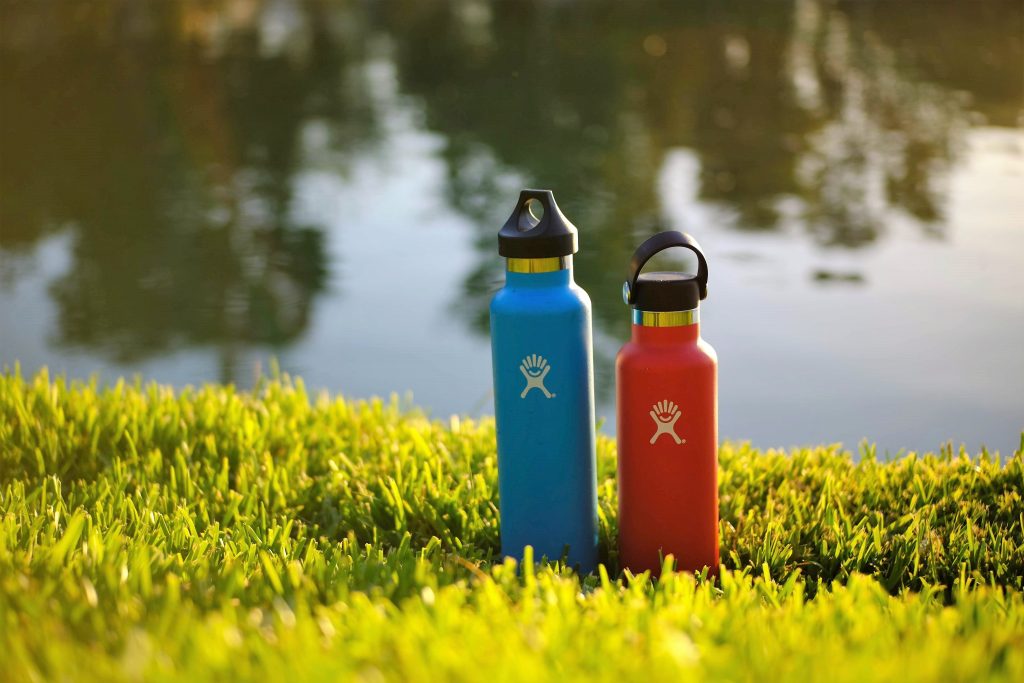It all started as far back as 1621 in the United Kingdom, where water bottling first started at the Holy Well. This caused interests to surge in the United States in the 1700s. Bottled water infiltrated the United States in 1767, when Jackson’s Spa in Boston started packaging and selling spring water in bottles. Unfortunately, the current bottled water industry is completely unsustainable.
Today, we are skyrocketing our consumption rates of bottled water. The global bottled water industry is worth around USD $306 billion. Analysts estimate that this will increase by a Compound Annual Growth Rate of 6.38% from 2021-2025.
The problem is that bottled water is a large polluter of the waterways. Today, most manufacturers create bottles using polyethylene terephthalate (PET), which can take anywhere between 500-700 years to breakdown. Given this timeframe, if people in the 1600s had made bottles out of PET, they would only begin degrading now!
Sustainability in Bottled Water

Despite access to safe drinking water from the tap, Australians spent around $2 billion AUD on bottled water in 2015. This equates to 726 million litres! Even increased interest in sustainability has not significantly impacted the market for commercially packaged water.
To put this into perspective, we’ll compare bottled water to the costs of other commodities.
Purchasing water from the shops costs approximately 1000 times the cost of water from the tap. Additionally, it takes up to 7 L of water and 1 L of oil to produce 1 L of bottled water.
In comparison, milk costs around $4.48 AUD per L and it’s $1.40 AUD for gasoline. However, 1 L of bottled water can range anywhere between $2.75 to $4.00 AUD (Dalley, 2013). In 2020, Sydney Water charged water use at $2.11 a kilolitre (1000 L.) That is less than a cent for a 600 ml bottle of water. Go check the cost of your local water provider and see how much you would save by drinking tap water.
What about recycling?

Recycling 41 plastic bottles could save enough energy to run a fridge for an hour, or a computer for 17 hours. This is fantastic as we don’t have to source raw materials and we would be a step closer to circularity.
Unfortunately, over 60% of disposed water bottles are landfilled or found in the natural environment each year, despite having multiple container deposit schemes and government incentives to recycle these products. It’s also important to consider the energy and transportation costs for a bottle of water.
Manufacturing and transporting bottled water may take up between 5.6-10.2 MJ per L in energy. Energy-use as large as this can run an average air condition for approximately 2.5 hours (Energy Use, n.d.). Additionally, this is 1000 fold more energy-intensive than tap water, which usually needs 0.005 MJ per L in treatment and distribution (UQ, 2020). Not to mention that fossil fuels are heavily utilised in creating the facility’s energy, which is known to create poor air quality and exacerbate greenhouse effects.
Ironically, more water is used to create bottled water than a person can drink. At least 6 L is required to produce 1.5 L of bottled water (UQ, 2020) which highlights bottled water’s unsustainability.
Alternatives to Bottled Water

The most obvious solution to ditching plastic bottled water is to bring a reusable bottle. Consider purchasing a bottle made from an environmentally responsible material, such as steel, silicone, or glass. This method is a cost-effective and sustainable solution. According to Earthday, purchasing a reusable bottle can save you approximately $300 a year! Furthermore, companies, such as Rolla Bottle, Que Bottle, and Hydaway produce collapsible water bottles perfect for traveling or if you are limited on space.
Next, try looking for a water fountain or water station where you can drink and refill your water bottle. Parks, shopping malls, schools, and transport stations are just some of the many public areas that might have a water fountain installed. Additionally, drinking tap water is safe and is an alternative option in most developed countries. However, not all countries have access to this.
Finally, if you’ve forgotten to bring your own bottle, don’t panic! Trying to find a water fountain or using your reusable coffee cup can substitute as your water bottle for the day.
Final Thoughts
Bottled water is so 1600s.
This consumer product has become the most expensive yet accessible item in the market. Purchasing a reusable bottle will save you thousands of dollars in a lifetime. As consumers, we need to demand change in our government, calling for a ban on single-use items, such as bottled water.
Make sure to check out these other articles on reducing plastic waste and recycled water to help you start your sustainable journey. Together, we can create a THRIVEable planet.
It’s quite wasteful to have water in bottles when we can have it on tap. This is not the case for many countries where sanitation is lacking and drinking from a tap may mean sickness.
Comments are closed.